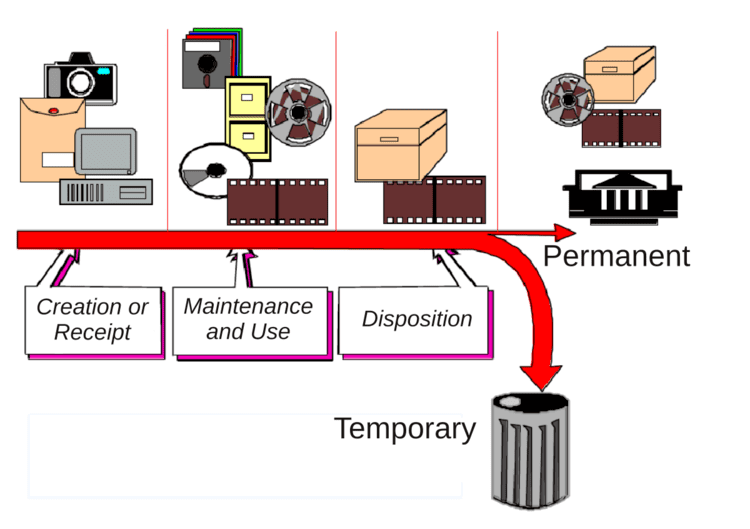 | ||
Records life-cycle in records management refers to the following stages of a records "life span": from its creation to its preservation (in an archives) or disposal. While various models of the records life-cycle exist, they all feature creation or receipt, use, and disposition.
Contents
Overview
The records management phase of the records life-cycle consists of:
This is then followed by a second, archival phase consisting of
Continuum model
Richard Berner of the University of Washington proposed a single records management-archives goal: "responsible records use and administration leading to either authorized destruction or archival preservation and administration."
The professions of records management and archives, while distinct, surely are working towards the same objective: the effective management of recorded information through all stages of the continuum, from creation to disposal. Effective management of recorded information (what Berner calls "responsible records use and administration") requires ongoing cooperative interaction between the records manager and the archivist in order to:
Important later contributions were made by Frank Upward and his development of the Records Continuum Model.
